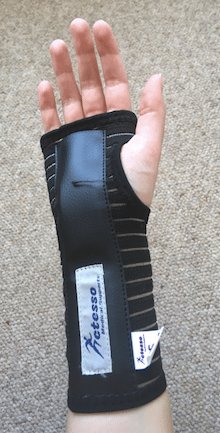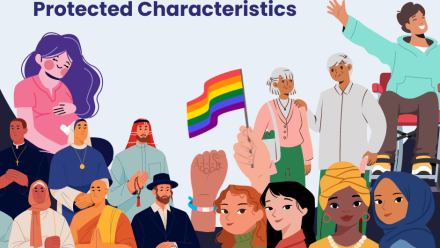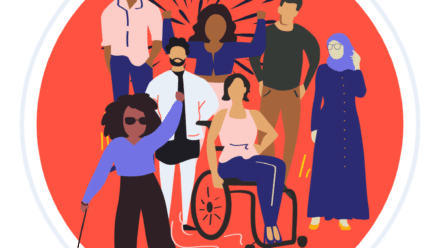“I was told it was in my head”: Life with Ehlers Danlos Syndrome
27th July 2022 by Charlotte Twinley
“No other condition in the history of modern medicine has been neglected in such a way as Ehlers Danlos Syndrome” – Professor Rodney Grahame, Rheumatologist
It can take over 10 years to be diagnosed with Ehlers Danlos Syndrome (EDS).
I was diagnosed after about 5 years by pure luck.
When I was 10 years old, I started to have the odd stomach pain. After various doctors appointments and tests, nothing was found. It was suggested I tried going gluten and dairy free on odd occasions, which helped – sort of.
At 12, I started to injure myself a lot more whilst playing netball or hockey at school. Everyone just assumed I was ‘getting too into it’ (which I was, but that’s besides the point!).
Two years later, the stomach pains became worse. More appointments, referrals and tests still showed nothing. I had an endoscopy (where a tube with a small camera on the end is inserted down the throat to look at the inside of my stomach), which came back clear.
A couple of days after an intense hockey training session, I woke up and couldn’t move my legs. My dad carried me to different doctors and I had an MRI which, again, showed nothing. The doctors had no idea. They gave me a pair of crutches to drag myself around with, hoping that it might improve as I could still feel my legs. A week later, I managed to wiggle my toes and gradually – literally step by step – I started to walk again.

I was told it was in my head
A few months passed, and I woke up to a bowl of Coco Pops for breakfast before going to school that morning. That’s when the stomach pain became unbearable whenever I ate. Back to the doctors we went but still nothing. I was told it was in my head, I was exaggerating, it was stress, puberty… amongst other things. Eventually, I received a referral to the same consultant who arranged the endoscopy, so I went with my mum to see him again. He examined me thoroughly and did an in-depth family and medical history.
This was when he found out that I was hypermobile (extra bendy) and often injured myself playing sports at school. Coincidently, just a month earlier, he went to a conference that linked stomach pain to hypermobility. He then referred me to one of the specialists in London who had been speaking at that conference. If I’d seen him a few weeks earlier, who knows what the next few years would have looked like!

This led to me getting my diagnosis of hypermobile Ehlers Danlos Syndrome (hEDS). The Ehlers Danlos Syndromes are a group of connective tissue disorders that can affect pretty much any part of the body, as connective tissue is found everywhere. There are 13 different types of EDS but the hypermobile type is the most common. At the moment, it’s found to affect 1 in 5,000 people in the UK but it’s also extremely under-diagnosed, which means that it might actually be closer to 1 in 500 people!
Hypermobile Ehlers Danlos Syndrome doesn’t have a genetic test, unlike the other types. Instead, a Rheumatologist examines your family’s medical history, your medical history, your current symptoms and sees how hypermobile your joints are – this is done with the Beighton Score test. It measures how hypermobile your joints are on a scale from 1 to 9.
Along with the stomach pain and joint issues I was having, I was also experiencing chronic fatigue, brain fog, circulation problems, fainting, my skin is fragile and scars easily, I don’t respond to local anaesthetics or types of sedation… and these are all related to hEDS in one way or another. And the time I couldn’t move my legs? It turns out I had overstretched my ligaments (made of connective tissue), which overstretched my muscles so much to the point where they couldn’t contract, meaning that I couldn’t move them!
There’s no cure for EDS
So I had this diagnosis, now what?
There’s no cure, so it’s all about management. As a 15 year old, this wasn’t easy to understand.

Over the next few years, I gave up sports that I loved, tried many different diets, medications and laxatives and went through some very interesting tests to determine how my digestive system was working (or wasn’t working!). Eventually, we found that my lower bowel was basically extra stretchy – just like my skin – so it was having trouble contracting to push the food through.
I went to university at 18 but my digestive system quickly got worse. I increased my laxatives and was still in severe pain. I soon dropped out and came home. A few months later, I couldn’t eat solid food at all. Not even soups or smoothies – it was too painful and my stomach was very distended. I ended up on Ensure Nutritional supplement drinks to keep me as healthy as possible, whilst we looked for answers.
Eventually I came across ‘stomas’ and did my research. A stoma is an artificial opening that’s made in the body, usually on the abdomen. There are different types – I was looking at an ileostomy, where my small intestine is brought to the surface of my abdomen, and waste goes into a bag that’s stuck on. Why would this work? Because it could bypass my lower bowel, which is the part of my digestive system which doesn’t work, so this seemed like a good answer!
I saw a colorectal surgeon who turned me away as he didn’t think it would work and said I was a ‘too complex case’. I went to all the local hospitals in my area for help who, again, said I was ‘too complex’. A family friend then suggested St Mark’s Hospital, in London, as they’re a specialist bowel hospital. We saw a surgeon there who agreed that something had to be done. He saw no reason why an ileostomy wouldn’t work so was happy to give it a go.
This was 4 years ago and I’m happy to say that it did work! I’m now able to eat anything I like and I take no medication for it. Honestly, I only wish I’d had the surgery sooner.

So, how does hEDS affect me now?
Well, my joints are still very painful and partially dislocate daily, and they’re gradually getting worse too. My hips are inflamed and have fluid build up, my ankles are very unstable and never ‘feel’ in place and my shoulders are constantly clicking. My gums are very fragile and it’s taken quite a few painful dentist appointments to eventually find a dentist who knows about EDS! I experience chronic fatigue and pain daily. Learning to pace yourself is vital with a chronic illness but something I still struggle with, which is why flexible working is amazing for me so I can do my job to the best of my ability!
Having a chronic illness can be incredibly lonely.

Learning to live with this condition takes time and a lot of perseverance. Although there is no cure, there are lots of management techniques that can help improve symptoms to give you a better quality of life. The hardest part can be getting the diagnosis in the first place. Although this lends itself to the medical model of disability, we still live in a world where getting the diagnosis is the key to accessing help and support with the condition, as well as finding others who you will be able to relate to. Afterall, having a chronic illness can be incredibly lonely.
However, there are avenues of support and connection. Finding spaces with shared lived experience, both online and offline, has been so helpful. Here are some of the places that have had a positive impact for me:
- Ehlers Danlos Support UK have created an EDS toolkit for GPs to help with the diagnosis process, and the charity’s website has lots of resources about the different types of EDS as well. EDS UK also run support groups, both on and offline, including some on social media.
- The Mighty is an incredible community of people with lived experience of health challenges, disabilities and chronic illnesses. Plus, their blog posts and health stories have often put into words things I’ve found it hard to communicate, or given me access to a new aspect of our community.
- Stuff That Works is an online space where people can share their experiences with their diagnosis and any treatments they’ve accessed.
- I’ve loved being able to learn from, and connect with, a whole community of disability activists across social media. For example:
- If you’re based in the UK and in employment or education, you could be able to access government funding for technology, equipment and/or one-to-one support or training. Check out D&A’s resources covering Access to Work (for the workplace) and Disabled Students’ Allowance (for education) to access a guide to the application process and beyond!
- D&A offer a suite of completely bespoke workshops. If your workplace would benefit from enhancing their understanding and support for people with chronic and long-term health conditions, we can step in. Find out more or get in touch to see how we can help.
Charlotte is an Accessibility and Inclusion Specialist at Diversity and Ability. You can also find her on Instagram and TikTok (@charlotteamylouise).


